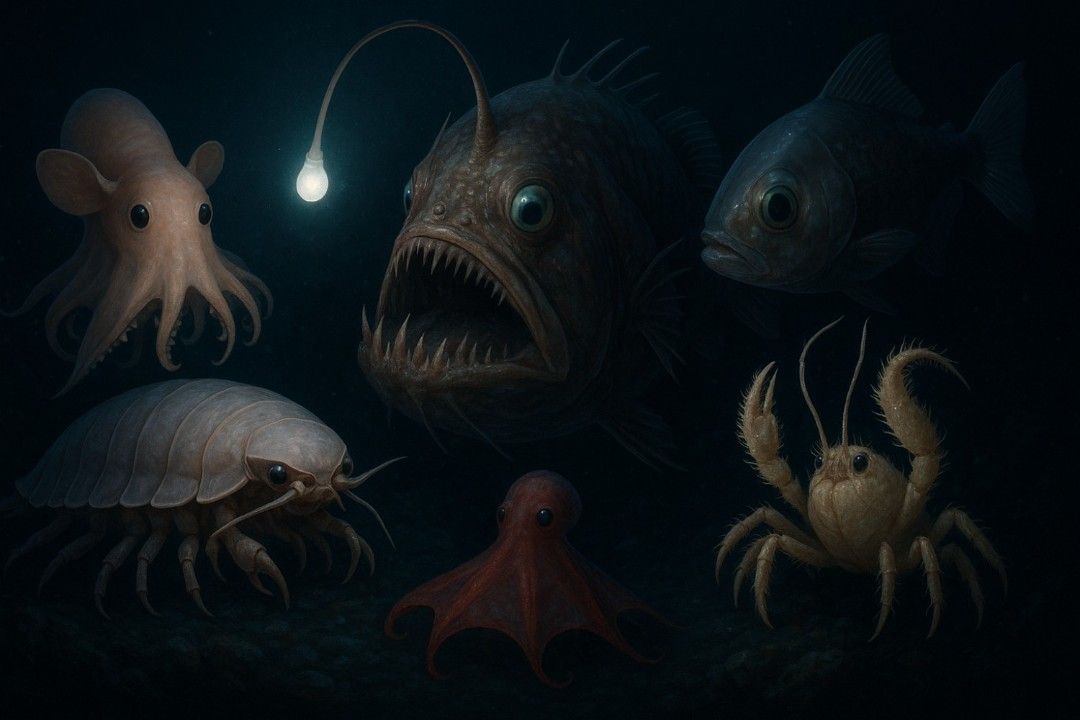Beneath the sunlit waves, the deep sea floor harbors a world of bizarre and fascinating creatures. Subjected to extreme pressures, freezing temperatures, and perpetual darkness, life forms here have evolved in remarkable ways. From glowing predators to shapeshifting scavengers, these extraordinary organisms reveal how life can thrive in the harshest environments on Earth. Explore the most astonishing inhabitants of the ocean’s mysterious depths.
1. Anglerfish
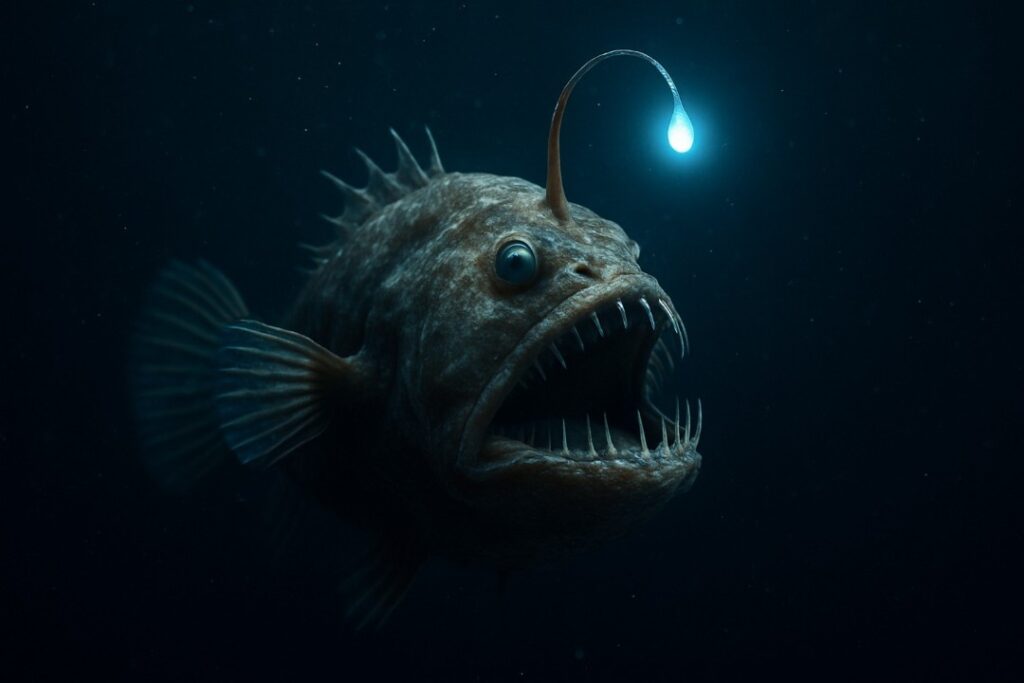
Anglerfish are renowned for the bioluminescent lure dangling from their heads, used to attract prey in pitch-black waters. Female anglerfish, much larger than males, dominate this species. Males are tiny and fuse to females, living parasitically. This adaptation ensures reproductive success in an environment where encounters are rare. The anglerfish’s massive jaws and distensible stomach enable it to consume prey larger than itself, making it one of the deep sea’s most formidable hunters.
2. Giant Isopod
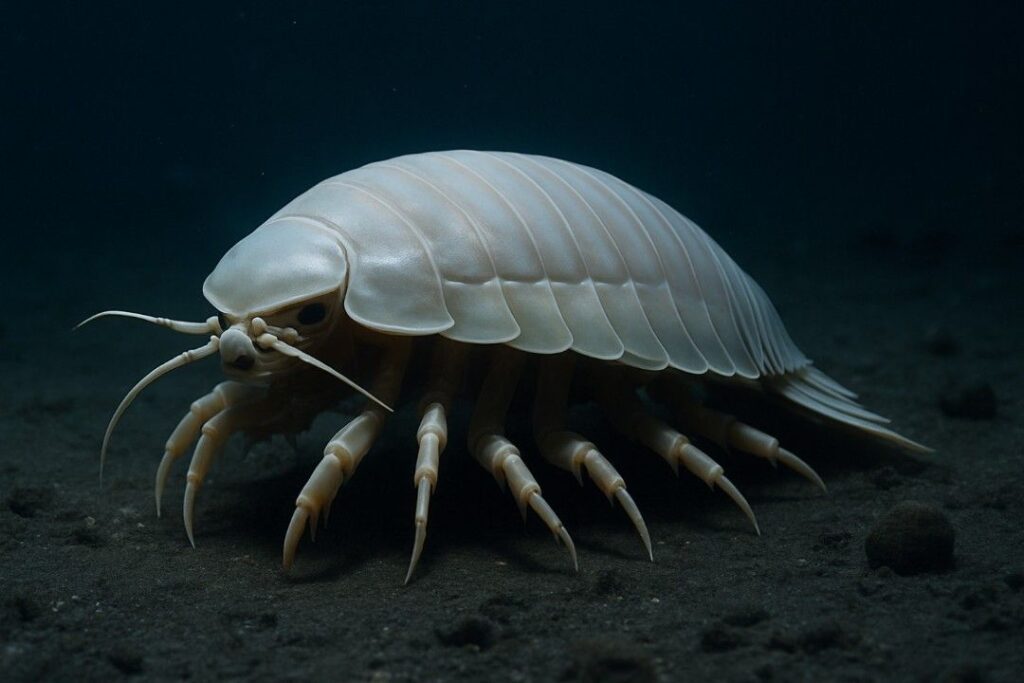
Resembling oversized pill bugs, giant isopods scuttle across the ocean floor in search of carrion. These crustaceans can grow up to 50 centimeters long, thanks to deep-sea gigantism—a phenomenon common in extreme environments. Giant isopods play a crucial role in the deep-sea ecosystem by cleaning up organic debris. Their armored exoskeleton protects them from predators, while their ability to survive long periods without food highlights their adaptability.
3. Vampire Squid
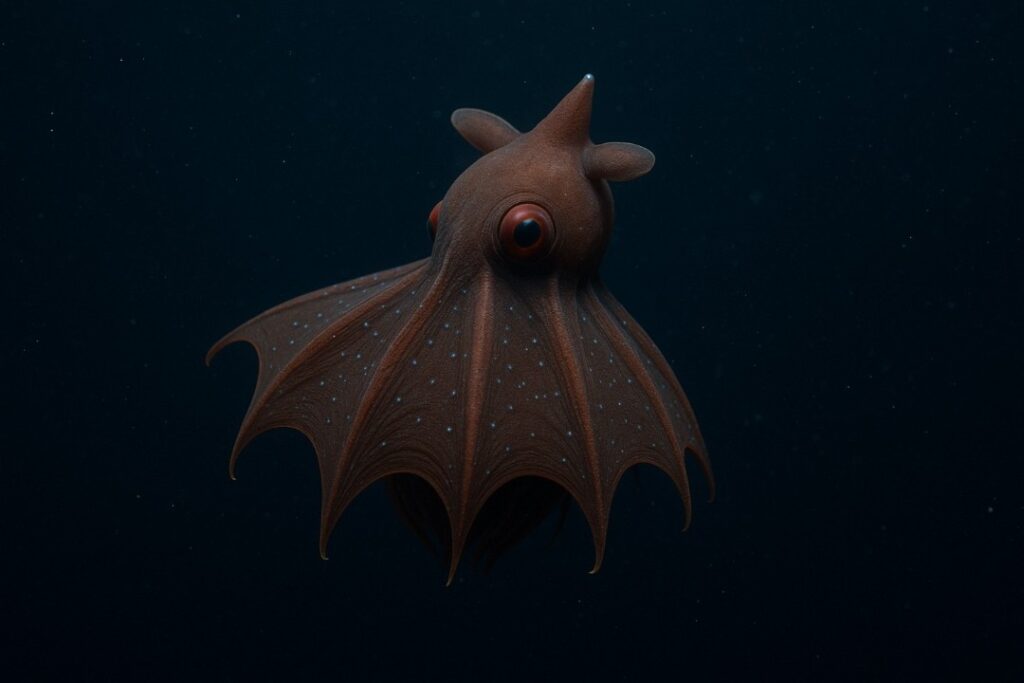
With its cloak-like web and striking red eyes, the vampire squid is a true marvel of the deep. Unlike typical squid, it doesn’t hunt live prey but feeds on “marine snow”—a mixture of organic particles and detritus. The vampire squid’s gelatinous body and low metabolic rate help it survive in oxygen-poor waters. Its unique defense mechanism involves ejecting a cloud of bioluminescent mucus to confuse predators rather than using ink.
4. Deep-Sea Dragonfish

Deep-sea dragonfish are fierce predators with long, fang-like teeth and light-producing photophores along their bodies. Their bioluminescence serves dual purposes: luring prey and communicating with mates. The dragonfish can emit red light, invisible to most other deep-sea creatures, giving it a stealthy hunting advantage. Their transparent, scaleless skin helps them remain hidden in the shadows, making them elusive and deadly hunters.
5. Yeti Crab
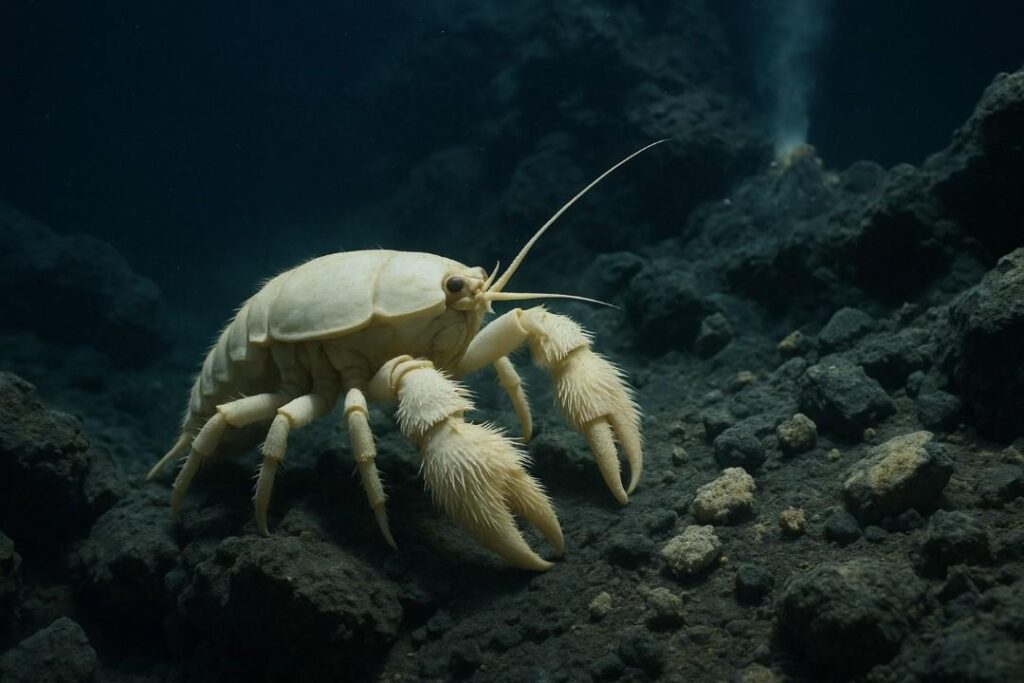
Discovered near hydrothermal vents, the yeti crab is instantly recognizable by its furry, bristle-covered claws. These appendages harbor bacteria, which the crab cultivates and consumes as food. Adapted to the nutrient-rich but harsh environment around vents, yeti crabs lack eyesight and rely on chemical cues to navigate. Their symbiotic relationship with bacteria is a fascinating example of life thriving through cooperation in the deep.
6. Dumbo Octopus
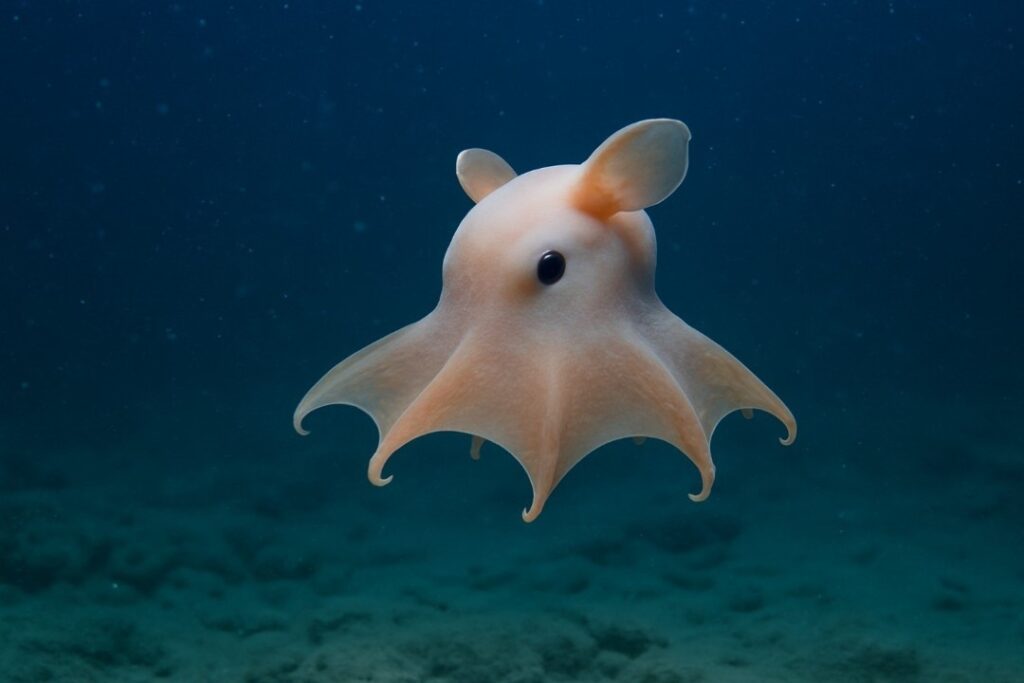
Named for its ear-like fins that resemble Disney’s Dumbo, this deep-sea octopus glides gracefully above the sea floor. Dumbo octopuses are among the deepest-living octopuses, found at depths of up to 7,000 meters. They use their fins to “fly” through the water and their arms to capture small crustaceans and worms. Their gelatinous bodies help withstand crushing pressures, while their endearing appearance has captivated scientists and ocean enthusiasts alike.
7. Goblin Shark
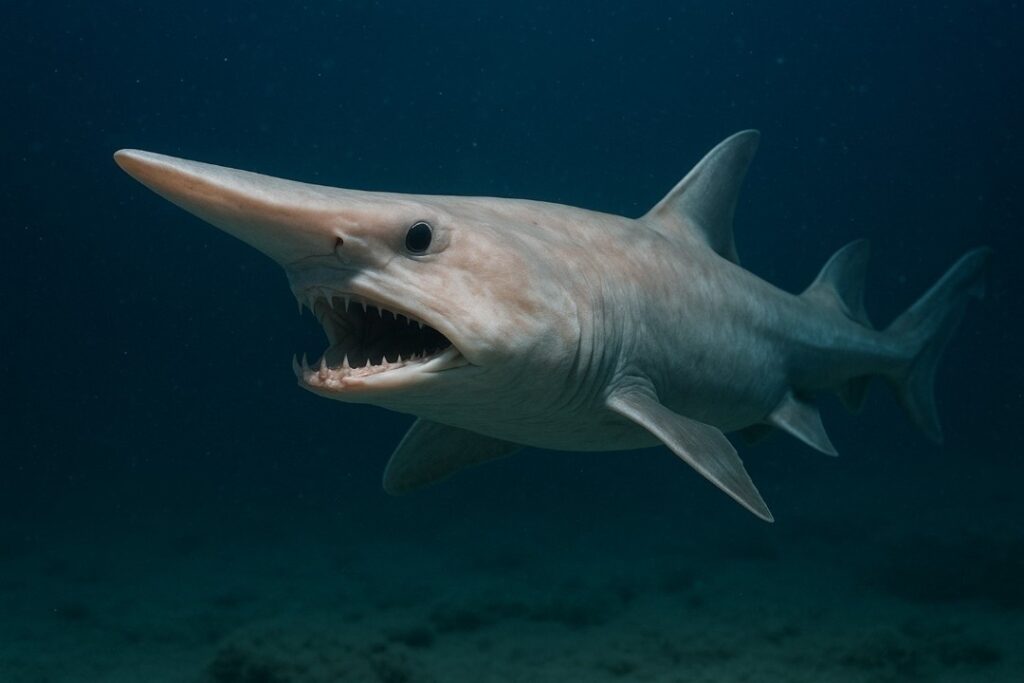
The goblin shark is often called a “living fossil” due to its ancient lineage. It’s instantly recognizable by its protruding jaw and flattened, elongated snout. When hunting, its jaw snaps forward with astonishing speed to capture prey. Goblin sharks inhabit the continental slopes and rarely encounter humans. Their translucent skin and pinkish hue make them one of the most unusual-looking sharks in the ocean.
8. Barreleye Fish
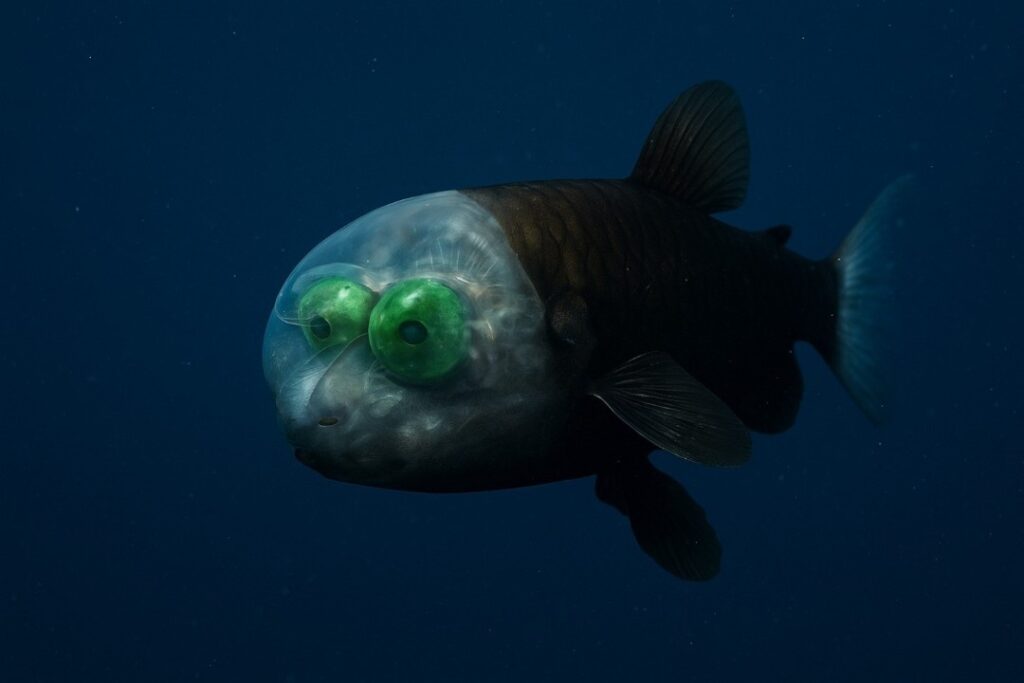
The barreleye fish possesses a transparent, dome-shaped head that allows it to look upwards through its own skull. Its tubular eyes are highly sensitive to faint light, perfect for spotting prey above. This unique adaptation also provides protection from stinging siphonophores, which the barreleye sometimes steals food from. Its otherworldly appearance highlights the creative solutions deep-sea creatures develop for survival.
9. Deep-Sea Hatchetfish

Named for their thin, silver, hatchet-shaped bodies, deep-sea hatchetfish use bioluminescent organs to blend into the faint light above. This camouflage technique, called counterillumination, makes them nearly invisible to predators from below. Their large eyes maximize light intake, aiding their ability to hunt tiny crustaceans in near-total darkness. These adaptations make hatchetfish masters of stealth in the twilight zone.
10. Sea Cucumber
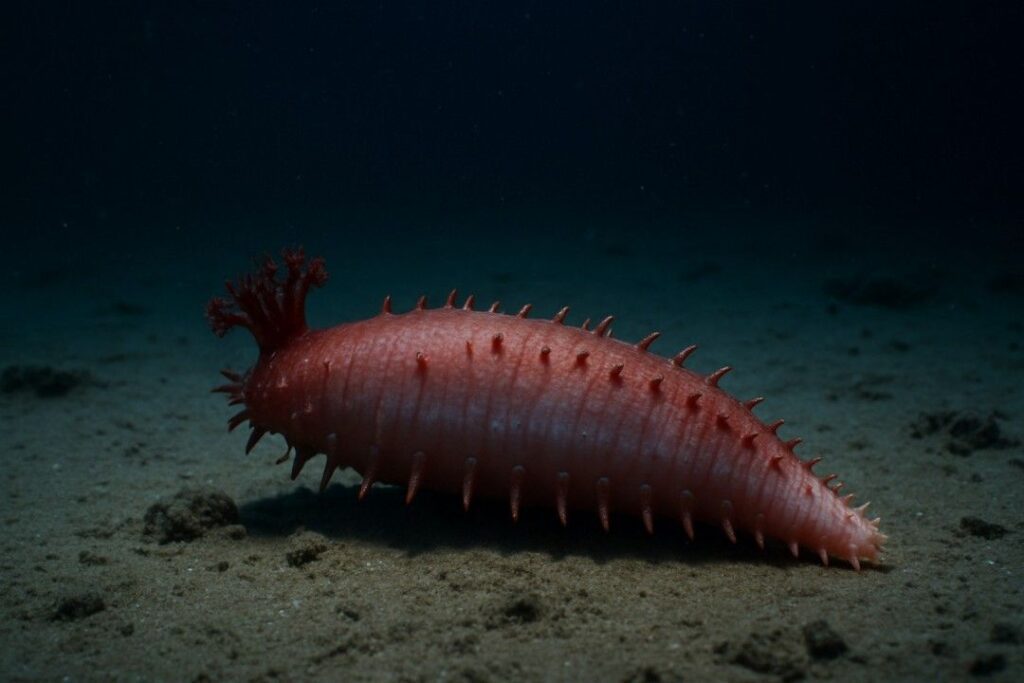
Sea cucumbers are soft-bodied echinoderms that play a vital role as recyclers on the ocean floor. By ingesting sediment and organic matter, they clean the sea bed and release nutrients back into the ecosystem. Some species can expel sticky threads or even their internal organs to defend against predators, later regenerating lost parts. Their unique locomotion and bizarre defense strategies set them apart from other deep-sea dwellers.
11. Riftia Tube Worm
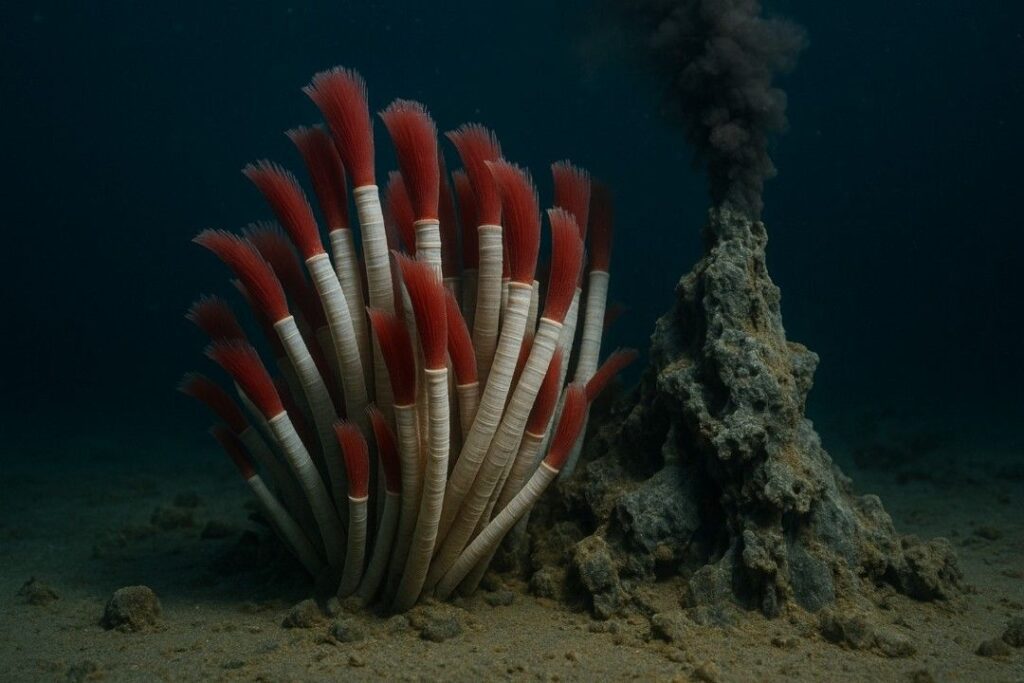
Living near hydrothermal vents, Riftia tube worms have no mouth or digestive tract. Instead, they rely on symbiotic bacteria within their bodies to convert vent chemicals into energy—a process known as chemosynthesis. These tube worms form massive colonies, creating entire ecosystems around them. Their presence reveals how life can flourish independently of sunlight, drawing energy directly from Earth’s internal heat.
12. Gulper Eel
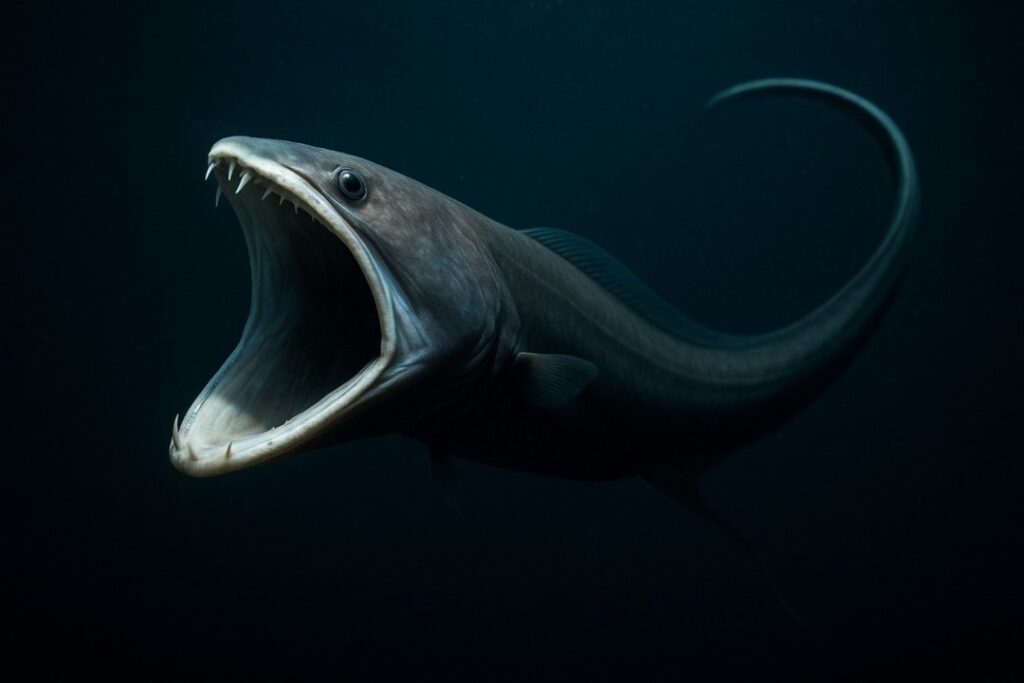
With its enormous mouth and expandable stomach, the gulper eel can devour prey much larger than itself. Its whip-like tail is tipped with a light-producing organ, possibly used to attract prey in the darkness. Gulper eels are rarely seen by humans but are perfectly adapted to the deep-sea environment, where food is scarce and competition is fierce. Their dramatic feeding adaptations make them true marvels of evolution.
13. Zombie Worm (Osedax)
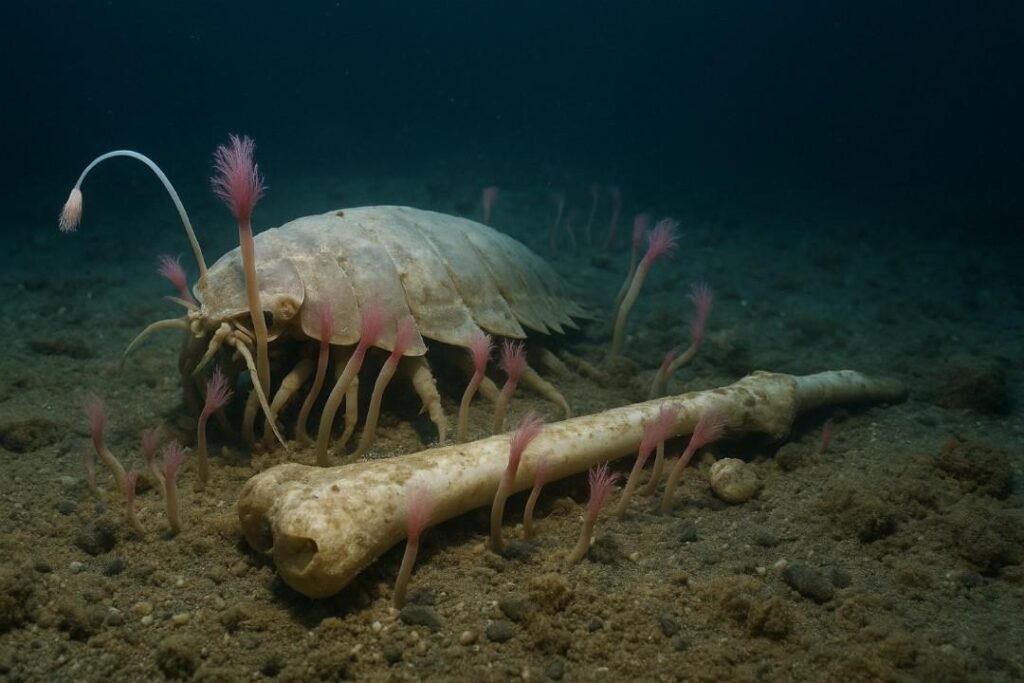
Zombie worms thrive on the bones of dead whales and large fish, secreting acid to bore into bones and extract nutrients. Lacking mouths and stomachs, they rely on symbiotic bacteria to digest fats and proteins. These worms play a crucial role in breaking down and recycling carcasses on the sea floor. Their eerie name reflects their role as decomposers, ensuring that nothing goes to waste in the deep.
14. Glass Sponge
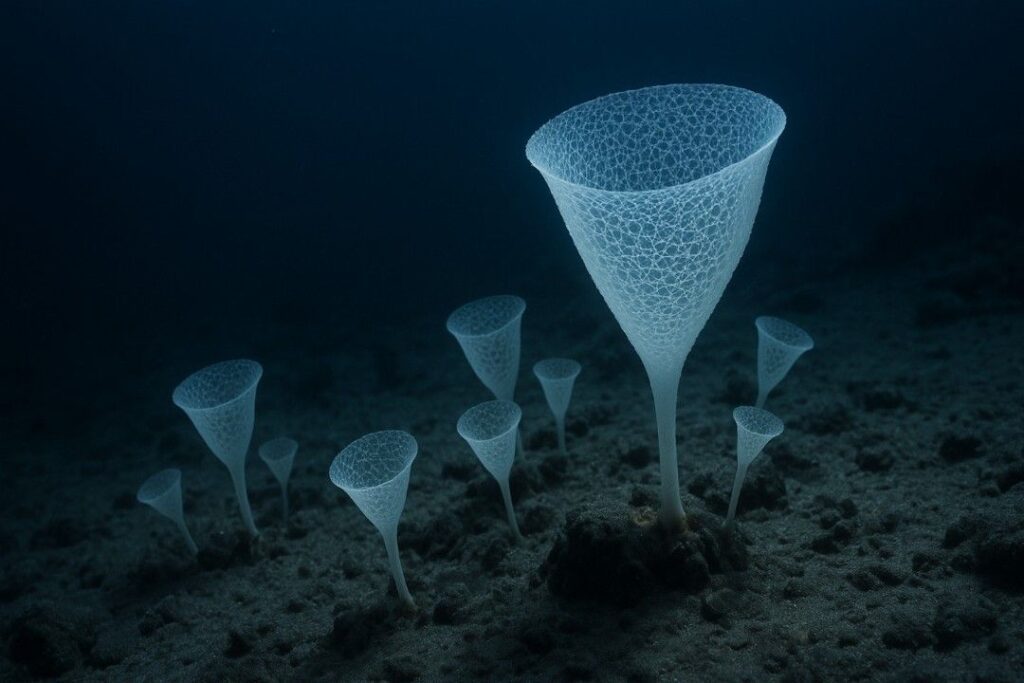
Glass sponges build intricate, glass-like skeletons from silica, forming delicate lattice structures on the ocean floor. These sponges filter vast amounts of water, capturing tiny particles and helping to clean the deep-sea environment. Some glass sponge reefs are ancient, providing habitats for diverse marine life. Their ability to thrive in cold, nutrient-poor waters demonstrates the resilience and ingenuity of deep-sea organisms.
15. Deep-Sea Ctenophores

Also known as comb jellies, deep-sea ctenophores are gelatinous animals that use rows of cilia—tiny hair-like structures—for movement. Many species produce mesmerizing flashes of bioluminescence, lighting up the darkness as they drift through the water. Unlike jellyfish, ctenophores capture prey with sticky cells rather than stinging tentacles. Their ethereal beauty and alien forms make them some of the most enchanting creatures of the deep.

